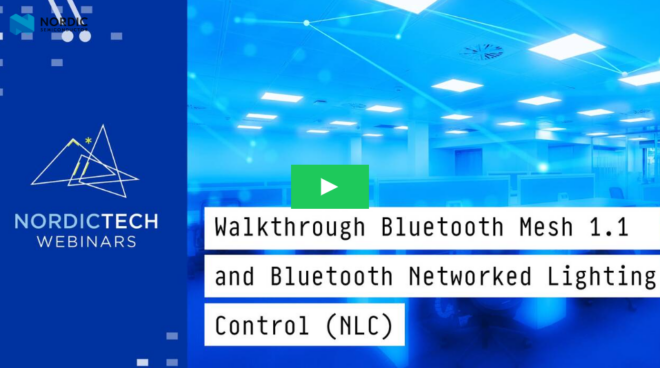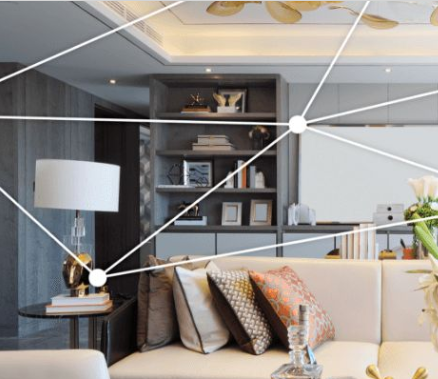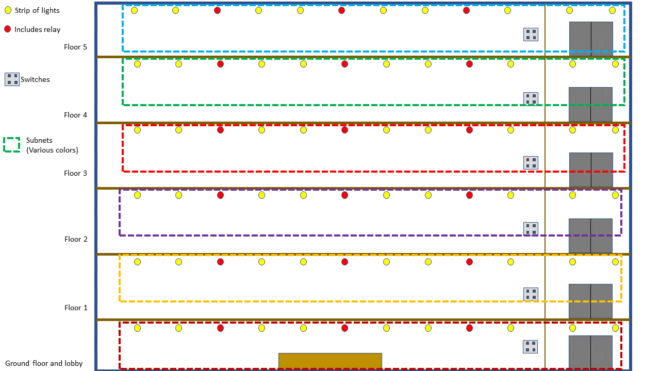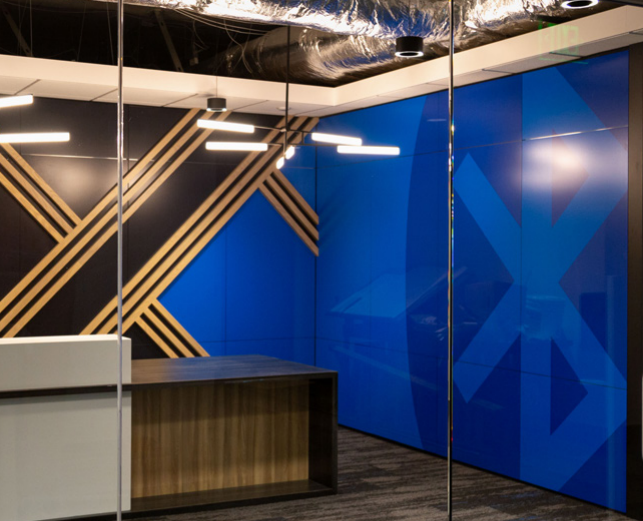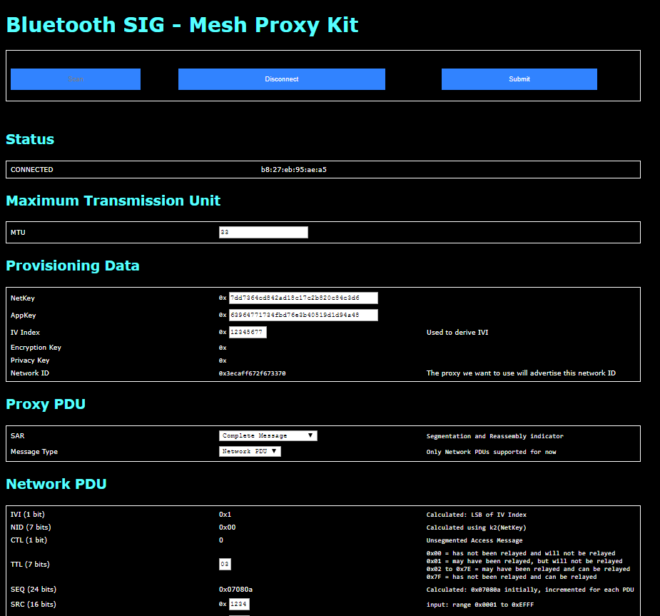In July 2017, the Bluetooth® Mesh specification was adopted by the Bluetooth Special Interest Group (SIG), adding a mesh network topology option to the existing point-to-point and broadcast capabilities of Bluetooth® technology. This revolutionary addon has already made a big impact in smart lighting, smart buildings, and wireless sensor networks to name a few. Since its release, there’s been evidence to indicate that Bluetooth Mesh is quickly maturing.
- There are already Bluetooth Mesh enabled smart lighting applications in the market
- Some semiconductor companies (Silicon Labs, Nordic, Qualcomm, Cypress, and more) have released Bluetooth Mesh Software Development Kits (SDK) for developers
- Some open source project foundations now include Bluetooth Mesh functionality on their projects for developer implementation or preview
- Bluetooth IP suppliers already released a Bluetooth Mesh IP suite
- Bluetooth protocol analyzer companies support Bluetooth Mesh protocol decoding and analysis, making it easier for you to debug your prototype or product
Bluetooth Mesh has made a big impact in smart lighting, smart buildings, and wireless sensor networks.
A New Technology Built on a Familiar Foundation
The current situation is somewhat similar to when Bluetooth Low Energy was adopted. At that time, as more and more smartphones used Bluetooth® Low Energy and most major mobile operating systems began to gradually add related APIs to support the technology, the community of Bluetooth developers became larger and larger.
It’s important for Bluetooth Mesh developers to recognize that both market and consumer expectations have matured, and developers need to deliver innovative Bluetooth Mesh prototypes or products to meet these expectations. Now that you’ve spent the last several months learning the basics of Bluetooth Mesh, the next step is to start the relevant development of Bluetooth mesh solutions with dev kits: the actual hardware and software development. Therefore, Bluetooth mesh developers face a very real question: how do I choose a suitable Bluetooth mesh development kit that meets my needs?
Choosing the Right Hardware Platform
In a recently released Bluetooth SIG paper, 3 Things to Know Before Choosing Your Bluetooth® Mesh Hardware Platform, we take a look at possible solutions for the embedded platform. There is no significant difference on mobile application development, like iOS and Android, since most of the work is the same as with developing any Bluetooth Low Energy application. This paper looks at three important aspects you should consider when choosing a Bluetooth Mesh platform.
- The importance of selecting the right architecture (chip/module) to ensure the success of your product
- Estimating memory consumption based on network configuration
- Key factors for lowering power consumption in a Bluetooth Mesh product
Of course, selecting the right solution can be an extremely complex process and it helps if you have a clear understanding of the system you plan to design. While the paper may not cover every requirement, it should provide some guidance and help you accelerate the process of hardware platform selection, especially for new entries.
Download 3 Things to Know Before Choosing Your Bluetooth Mesh Hardware Platform
to learn more about which Bluetooth Mesh hardware platform is right for your specific needs.
![]()
FEATURED DOWNLOAD
3 Things to Know Before Choosing Your Bluetooth Mesh Hardware Platform
This comprehensive developer paper provides tips for choosing a Bluetooth Mesh hardware platform that meets your needs.





![shutterstock 1653733096[1]](https://www.bluetooth.com/wp-content/uploads/2024/03/shutterstock_16537330961-660x372.jpg)
![Periodic Advertising with Responses[1]](https://www.bluetooth.com/wp-content/uploads/2024/02/Periodic-Advertising-with-Responses1-660x345.png)




